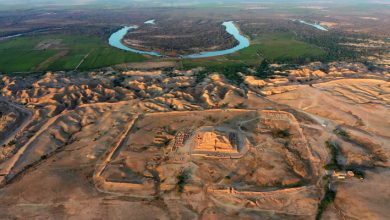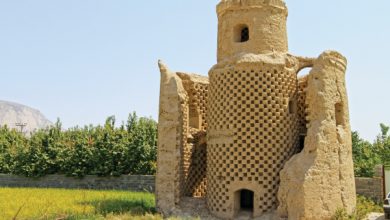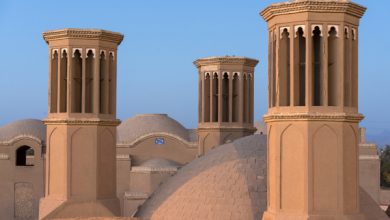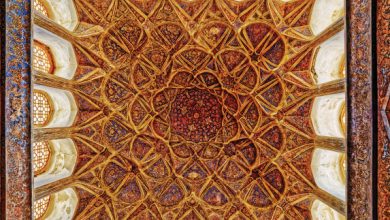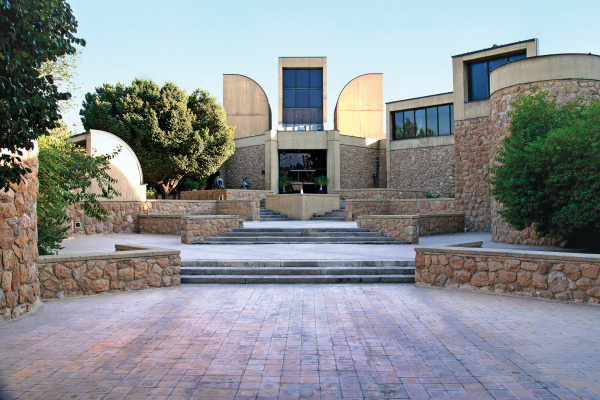
Author: Maryam Mirsaeedi/ Translated by: Mitra Asadnia/ Photo by: TMoCA
In the heart of Tehran, I get off at the Enghelab Square metro station and sneak my way past the crowds of people. Strolling along Kargar Street, a cool breeze feels pleasantly refreshing on my face; I finally reach Laleh Park. Further up the path, a group of young men play pop tunes and vendors display their handcrafts for sale, including small metal sculptures, necklaces, colourful and woven bracelets and bangles. A few girls and boys are nearby making their own artwork.
Walking past the rows of trees, eye-catching structures bringing the wind catchers of Yazd to mind, emerge in front of me. Yet, these are modern concrete structures, built of glass and stone. Continuing on further ahead, more of these ‘wind catchers’ pop up on my way and I cannot but feel surprised at how this magnificent architecture reminding me of the central deserts of Iran, so perfectly sits in the heart of modern Tehran. This pleasant combination of modernity and tradition is the most fitting introduction to the Tehran Museum of Contemporary Art.
Spread across approx. 5,000 square meters, the Museum, inscribed onto Iran’s National Heritage List, was designed in 1967 by a prominent Iranian architect, Kamran Diba, who subsequently became the museum’s first director. Diba currently lives in Paris and is a member of Colegio de Arquitectos of Spain. His other works in Iran include Shafaq Park and Niavaran Cultural Centre in Tehran and Shahid Chamran University (formerly Jondishapur) mosque In the heart of Tehran, I get off at the Enghelab Square metro station and sneak my way past the crowds of people. Strolling along Kargar Street, a cool breeze feels pleasantly refreshing on my face; I finally reach Laleh Park. Further up the path, a group of young men play pop tunes and vendors display their handcrafts for sale, including small metal sculptures, necklaces, colourful and woven bracelets and bangles. A few girls and boys are nearby making their own artwork.
Walking past the rows of trees, eye-catching structures bringing the wind catchers of Yazd to mind, emerge in front of me. Yet, these are modern concrete structures, built of glass and stone. Continuing on further ahead, more of these ‘wind catchers’ pop up on my way and I cannot but feel surprised at how this magnificent architecture reminding me of the central deserts of Iran, so perfectly sits in the heart of modern Tehran. This pleasant combination of modernity and tradition is the most fitting introduction to the Tehran Museum of Contemporary Art…
Find more on:
http://gilgameshmag.com/en/product/3049/
